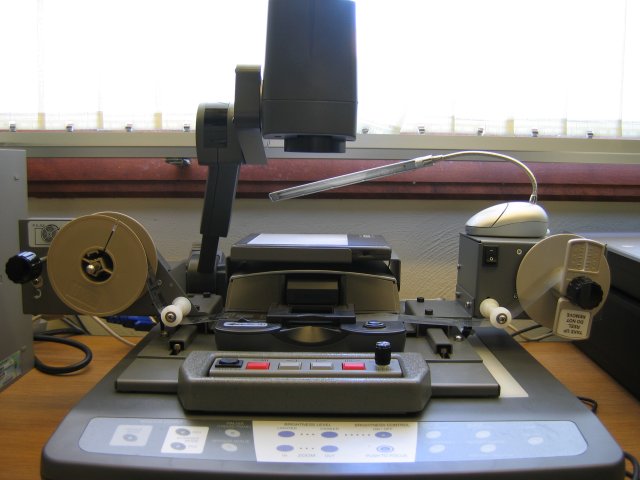"Despite the speed and ease digital access has provided us in recent decades, the endless software and hardware changes and upgrades render digital systems unreliable and too expensive for long-term preservation and access of records and photos." Why Microfilm? Technology is not the solution to preservation; it is the problem. (Wyoming State Archives, 2007).

Disadvantages of Microfilm
Access and retrieval of information is cumbersome, unlike digital records.
Microfilm can be scanned and converted to searchable text using optical character recognition technology, but scanning technology is still evolving, and when scanning is inaccurate, it requires laborious editing.
Challenges of Digitization
Proprietary technology - the lack of standards between the multitude of hardware and software manufacturers makes it difficult to ensure access, particularly over time.
Short lifetime of storage media
Non-backwards compatibility
Continuous maintenance - digital preservation is not a one-time conversion due to technological changes; materials require migration to maintain access.
Continuous cost - difficult to budget for the migration of information due to the unpredictable frequency and cost of new technology.
Source: Wyoming State Archives. (2007). Why microfilm? Cheyenne, WY: Wyoming State Archives.
A Hybrid Approach
Digitizing microfiche is a hybrid approach to preservation and access, combining the stability of microfilm with instant access. Digital imaging provides improved access, transmission and distribution of information.
In recent years, traditional microfilm readers have been increasingly replaced, or supplemented, by newer machines that integrate digital technology.
In records management, digital storage is generally used for active information, and microfilm for inactive information. However, microfilm is used as a secondary back up source due to its stability. For example, in the State of Arizona certain records are still required to be microfilmed alongside electronic storage.
Source: Kelsey, S. (Ed.) (2008). Microfilm and digital access. Louisiana Libraries. 71(1), 11-13.
Source: Morrison, R. L. (2009). Looking back and looking ahead. Infonomics Guide (2009 supp.), 76-79.
Source: Willis, D. (1992). A Hybrid Systems Approach to Preservation of Printed Materials. Washington, DC: Commission on Preservation and Access.